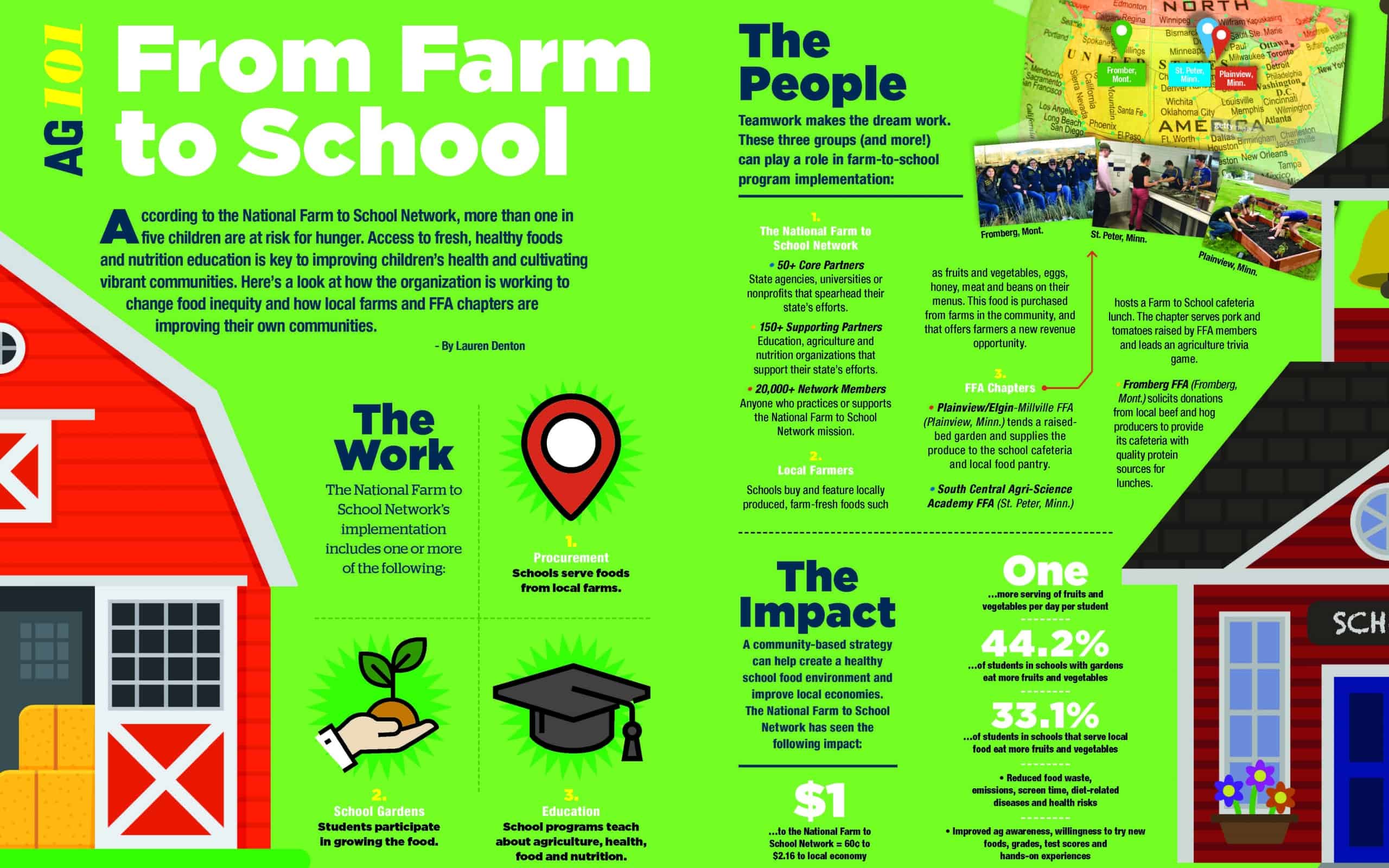According to the National Farm to School Network, more than one in five children are at risk for hunger. Access to fresh, healthy foods and nutrition education is key to improving children’s health and cultivating vibrant communities. Here’s a look at how the organization is working to change food inequity and how local farms and FFA chapters are improving their own communities.
The Work
The National Farm to School Network’s implementation includes one or more of the following:
PROCUREMENT: Schools serve foods from local farms.
SCHOOL GARDENS: Students participate in growing the food.
EDUCATION: School programs teach about agriculture, health, food and nutrition.
The People
Teamwork makes the dream work. These three groups (and more!) can play a role in farm-to-school program implementation:
1. The National Farm to School Network
- 50+ Core Partners State agencies, universities or nonprofits that spearhead their state’s efforts.
- 150+ Supporting Partners
Education, agriculture and nutrition organizations that support their state’s efforts. - 20,000+ Network Members Anyone who practices or supports the National Farm to School Network mission.
2. Local Farmers
Schools buy and feature locally produced, farm-fresh foods such as fruits and vegetables, eggs, honey, meat and beans on their menus. This food is purchased from farms in the community, and that offers farmers a new revenue opportunity.
3. FFA Chapters
- Plainview/Elgin-Millville FFA (Plainview, Minn.) tends a raised-bed garden and supplies the produce to the school cafeteria and local food pantry.
- South Central Agri-Science Academy FFA (St. Peter, Minn.) hosts a Farm to School cafeteria lunch. The chapter serves pork and tomatoes raised by FFA members and leads an agriculture trivia game.
- Fromberg FFA (Fromberg, Mont.) solicits donations from local beef and hog producers to provide its cafeteria with quality protein sources for lunches.
The Impact
A community-based strategy can help create a healthy school food environment and improve local economies. The National Farm to School Network has seen the following impact:
- $1 … to the National Farm to School Network = 60¢ to $2.16 to local economy
- 1 … more serving of fruits and vegetables per day per student
- 44.2% … of students in schools with gardens eat more fruits and vegetables
- 33.1% … of students in schools that serve local food eat more fruits and vegetables
- Reduced food waste, emissions, screen time, diet-related diseases and health risks
- Improved ag awareness, willingness to try new foods, grades, test scores and hands-on experiences












